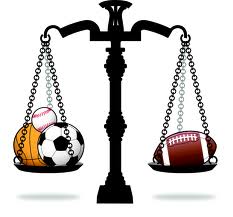P.J. Fleck Rowing the Royalty Boat to Help Kids, and More: 3 And Out 7.26.17

On today’s episode of 3 And Out, Bob Sansevere and I discussed the recent news story regarding Gophers football coach P.J. Fleck donating all of his licensing royalties from “Row the Boat” merchandise to children’s charities.
By way of background, at the time he was hired by the U of M from Western Michigan University, Coach Fleck paid $50,000.00 to Western Michigan to secure the trademark rights to his signature phrase “Row The Boat.” When he was hired by the U in January, Fleck stated his intent to make that three-word phrase an integral part of the Gophers football program, believing it will help connect the whole state of Minnesota to the team.
Coach Fleck began using “Row the Boat” as a mantra in 2011, when he was an assistant coach at Rutgers in 2011 and had an infant son, Colt, die of a heart condition. “As you hold your son as he takes his last breath, your whole life changes,” Fleck explained to ESPN. “You’re living your life for someone else. Fleck compared that to the way a crew needs to row together, as one. Fleck compares the boat to a shared sacrifice for the players, coaches, administration and fans. The oar symbolizes “energy,” and the compass points to the shared goal of success.
Under the agreement with Western Michigan, Fleck legally assumed ownership of the phrase and be able to use or transfer it at will. As part of the agreement, for five years, Fleck will make a $10,000 annual gift to Western Michigan, which will go toward a scholarship for a Broncos walk-on football player.
For some legal background, a trademark is any individual or combination of words, phrases, symbols or designs that identifies or distinguishes the source of goods of one party from those of another. A service mark does for services what a trademark does for goods. A trademark is different from a copyright and a patent. A copyright protects the contents of an original artistic or literary work, and patent protects a new and novel invention. Trademarks protect the intellectual property that owners create to identify goods and services, not the goods and services themselves. Trademarks can also exist indefinitely (subject to ongoing use and renewal requirements), while patents typically expire after 20 years, and copyrights generally expire 70 years after the death of the creator. In the United States trademark system, trademark rights accrue through “use,” not registration. This means that if you have already begun to use a mark as a trademark, you rights began to accrue as of that date of “first use” (this is commonly referred to as having “common law” rights). Rights under Federal law begin to accrue on the date of your first use in “interstate” commerce (most businesses satisfy the “interstate” requirement, including making goods of services valuable through a website). These rights allow you to protect your trademark from infringement by others who would attempt to use the same mark or a similar mark after your date of first use. Hence, anyone who “uses” a mark has a legal trademark under the common law. Conversely, an owner has a “registered” trademark when the mark is listed either on the Principle Register or the Supplemental Register of the United States Patent and Trademark Office (“USPTO”).
What’s the benefit of a trademark? A trademark is a way of creating a brand for one’s products. A service mark, does for services what a trademark does for goods. Regardless of the type of business, trademarks and service marks help to establish a company’s brand equity. An easily identifiable mark instills trust, confidence and loyalty in the product for the consumer, what is often referred to as “goodwill.” Trademarks and service marks are necessary to build brand value, and registration of your marks provides you with tools to protect and enforce your marks.
Registering a trademark through the USPTO is an easy and cost-effective way to establish and enforce trademark rights. Registration provides nationwide notice of the registrant’s claim of ownership of the mark and permits use of the Circle-R “®” symbol. By doing so, it discourages others from using confusingly similar marks and it makes searching for similar marks easy. The process of registration, as discussed below, also ensures that confusingly similar marks cannot conflict with one’s own marks. Registration treats the mark as if used nationwide as of the application date, instead of the common-law treatment which limits trademark rights to the geographic area of use or reputation of the mark. Registering the mark grants the owner the right to bring an action in federal court for matters concerning the mark, and, in certain cases, obtain significant monetary recovery including attorneys’ fees.
Registration with the USPTO provides a basis for trademark and service mark protection in foreign countries, and provides protection by U.S. Customs to prevent importation of foreign goods that might infringe on the owner’s trademark rights.
To listen to today’s episode, which also included our postmortem on O.J. Simpson’s bizarre parole hearing and a brief discussion of the recently released study on the prevalence of CTE amongst former NFL players, click here.
3 And Out is presented by The BS Show and is heard every Wednesday on the Tom Barnard Podcast Network. Past episodes are archived on the Sports and the Law page of Jeffrey O’Brien Today.